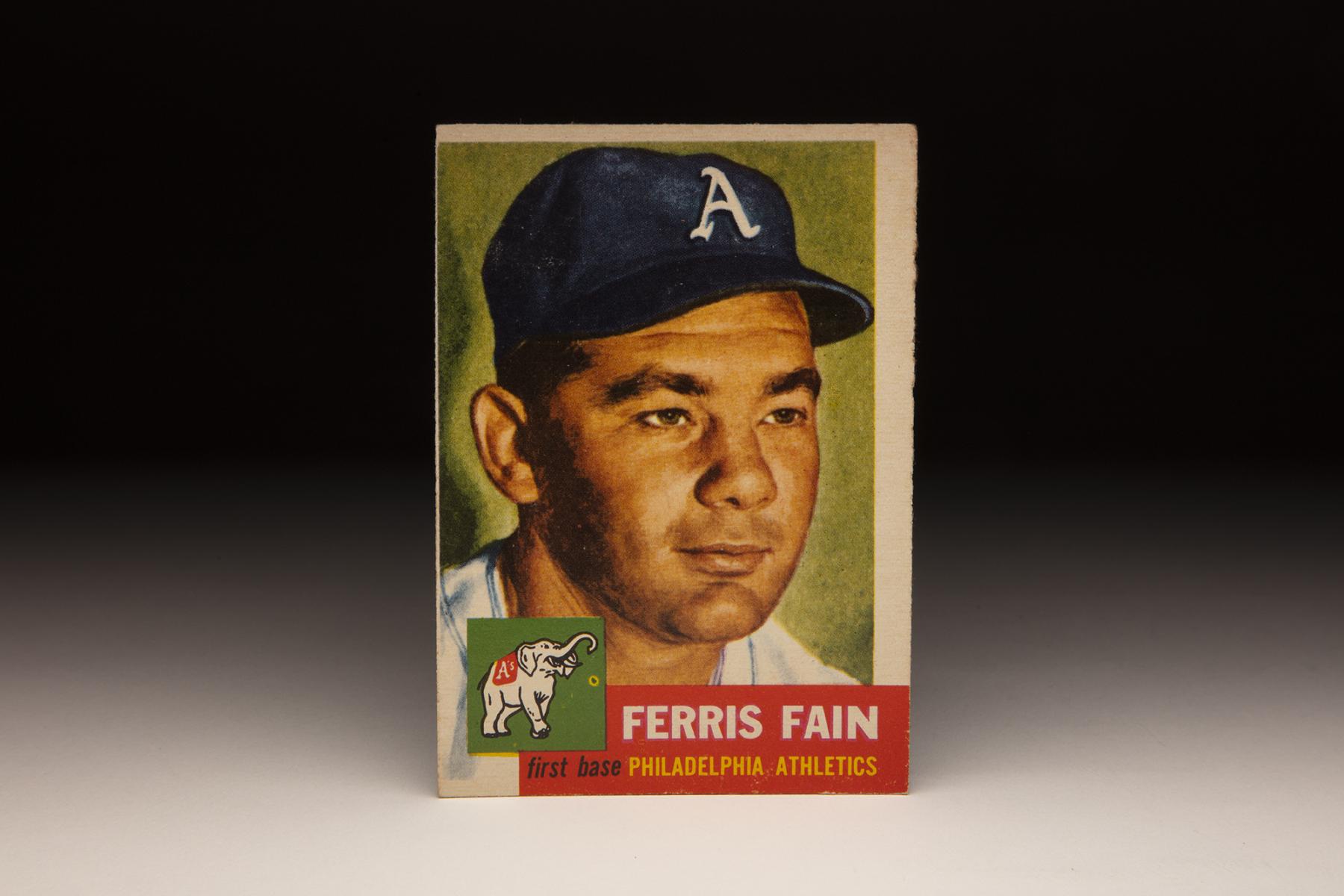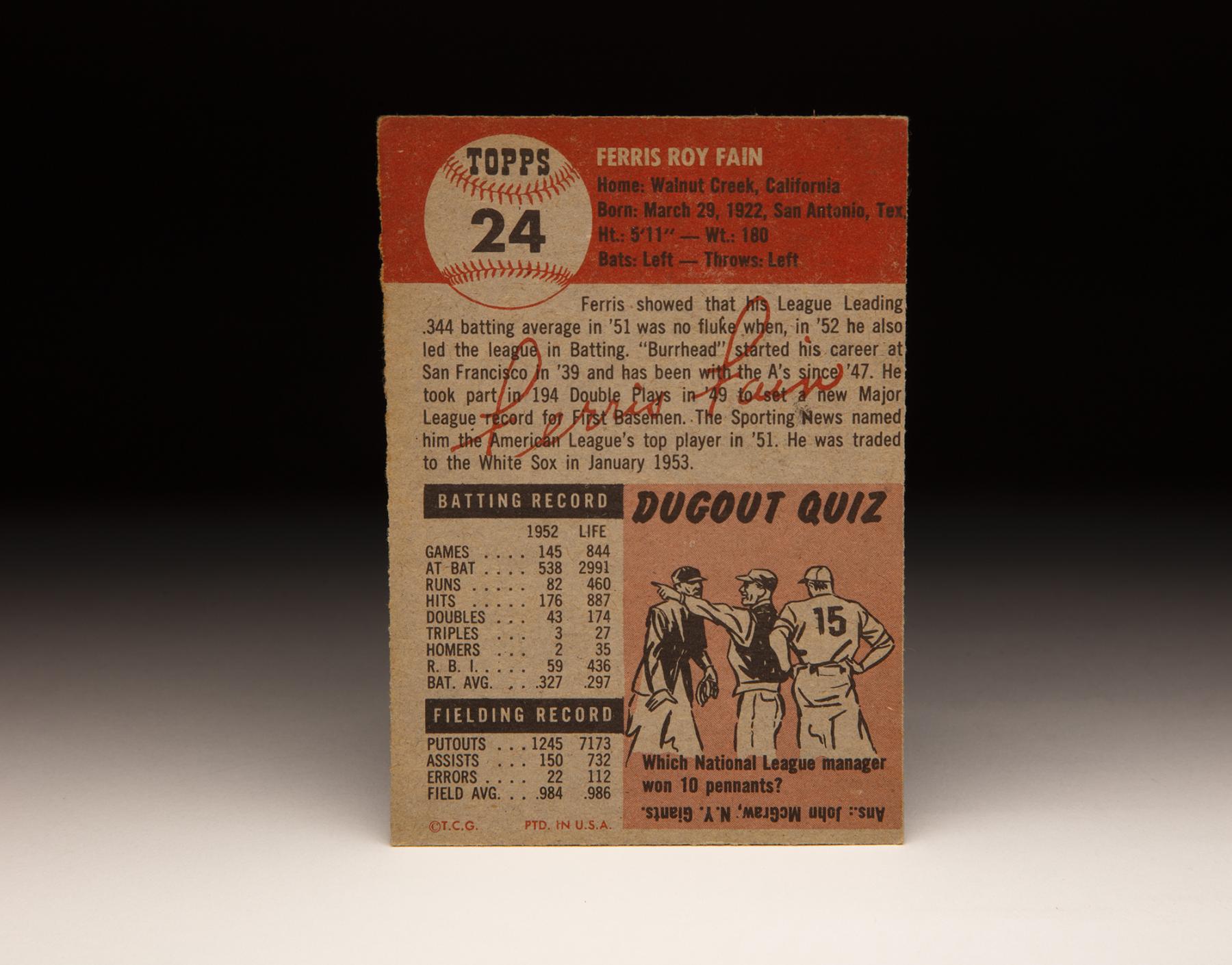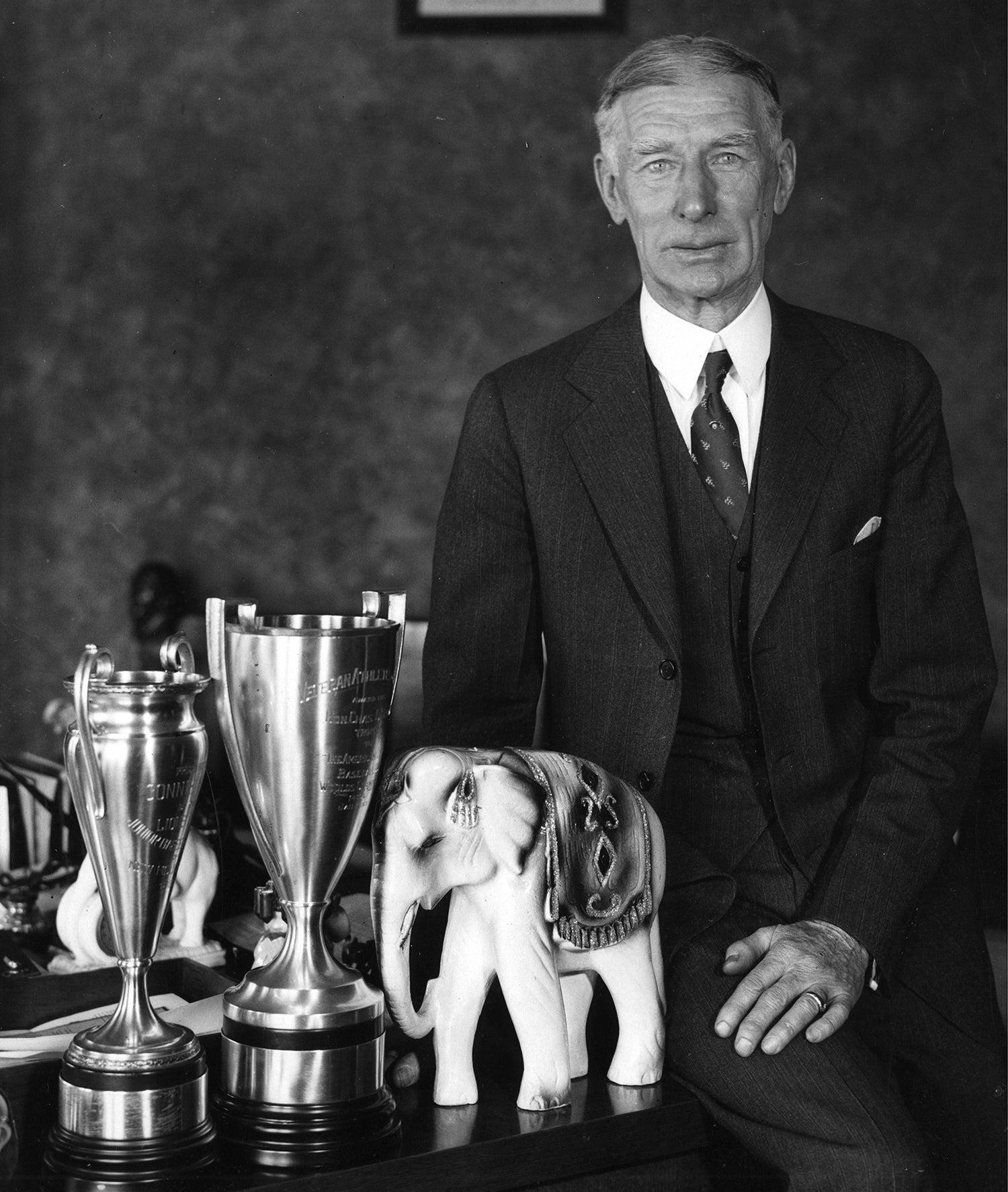- Home
- Our Stories
- #CardCorner: 1953 Topps Ferris Fain
#CardCorner: 1953 Topps Ferris Fain
Until the great Sean Foreman changed the world with baseball-reference.com, the numbers of the game were brought to us via ink and paper in books that were the size of small dogs.
Page after page of numbers appeared in encyclopedic order – numbers that held the history of the game one digit at a time.
But occasionally, the rows of gray were interrupted by black. Startling, bold numbers that jumped off the page and screamed “LEAGUE LEADER”.
Hall of Fame Membership
There is no simpler, and more essential, way to demonstrate your support than to sign on as a Museum Member.
It was through these bold numbers that I first encountered Ferris Fain.
Born March 29, 1921, in San Antonio, Fain’s father Oscar was a part-time boxer who rode a horse named Duval to a runner-up finish at the 1912 Kentucky Derby. Fain’s parents divorced when he was an adolescent, and his mother moved Fain and his brother to Oakland.
By high school, Fain developed a reputation as a top prospect and was playing for the San Francisco Seals of the Pacific Coast League before he graduated from high school. Fain took over as the Seals regular first baseman from 1940-42. He served in the Army Air Corps from 1943-45, including a tour at Hickam Field in Hawaii where he played on the base team with future Hall of Famers Joe DiMaggio, Joe Gordon and Red Ruffing.
Returning to the Seals in 1946 after the end of World War II, Fain hit .301 with 11 home runs, 112 RBI and 129 walks in 180 games. Following the season, the Philadelphia Athletics selected Fain in the Rule 5 Draft.
On Opening Day in 1947, Fain started at first base for the A’s and hit in the No. 3 spot in the order, going 1-for-4 with a walk in Philadelphia’s 6-1 win over the Yankees. From there, Fain fashioned a season that included a .291 batting average, 71 RBI, 95 walks and a .414 on-base percentage.
In the inaugural season of the Baseball Writer’ Association of America Rookie of the Year voting – with only one award for both leagues – Fain finished fourth behind Jackie Robinson, Larry Jansen and Spec Shea. Fain’s presence helped the A’s improve by 31 games over their 1946 record and finish above .500 for the first time since 1933.
Over the next three seasons – while battling a balky right knee that would hound him throughout his career – Fain consistently drew more than 100 walks a year, hit around .280 and drove in about 80 runs. He also became known for his daring defense, leading the league in assists four times while – as a result of his aggressive play – also pacing the AL in errors among first basemen five times.
In 1951 – the first season in A’s history without manager Connie Mack, who had stepped down following the 1950 campaign – Fain was named team captain and started the All-Star Game for the AL at first base. A broken foot cost him five weeks of playing time, but in 117 games Fain hit .344 to lead the league. His on-base percentage of .452 would have led the AL in five of the 10 seasons of the 1950s.
The other five seasons, Ted Williams – the man whose .464 OBP topped Fain in 1951 – paced the AL.
In 1952, Fain hit .327 to claim his second batting title while also leading the AL in doubles (43) and on-base percentage (.438). But after battling personal issues for much of the season, Fain was traded to the White Sox following the 1952 campaign in exchange for Joe DeMaestri, Ed McGhee and Eddie Robinson.
His 1953 Topps card was his last in an Athletics’ uniform.
Injuries and off-the-field incidents limited Fain to 128 games in 1953. He hit just .256, but posted a .405 on-base percentage on the strength of 108 walks.
Fain seemed headed for a bounce-back year in 1954, hitting .302 with 51 RBI through 65 games before collision with Red Sox catcher Sammy White re-injured his right knee and ended his season.
The White Sox traded Fain to the Tigers on Dec. 6, 1954, in a deal that featured another hard-hitting first baseman: Walt Dropo.
But Fain struggled with knee pain and was released on July 6, 1955, after hitting .264 with two homers and 23 RBI in 58 games.
The Indians signed Fain a week later to take the spot of Vic Wertz – who was sidelined with a non-paralytic form of polio – but was released following a season where he hit a combined .260 with two homers and 31 RBI.
He drew a whopping 94 walks, however, and his on-base percentage of .455 would have led the AL had he had enough at-bats to qualify.
After spending the 1956 season as a player coach for the Sacramento Solons of the PCL, Fain retired.
He had several brushes with the law in his later years – mainly for growing cannabis – and passed away on Oct. 18, 2001.
What is left is his numbers: a .290 career batting average, 904 walks, 1,139 hits – and a .424 career on-base percentage that ranks 13th all-time.
Of the 12 players ahead of Fain on that list, 10 are Hall of Famers.
It’s a story that deserves a little bold print.
Craig Muder is the director of communications for the National Baseball Hall of Fame and Museum
Related Stories
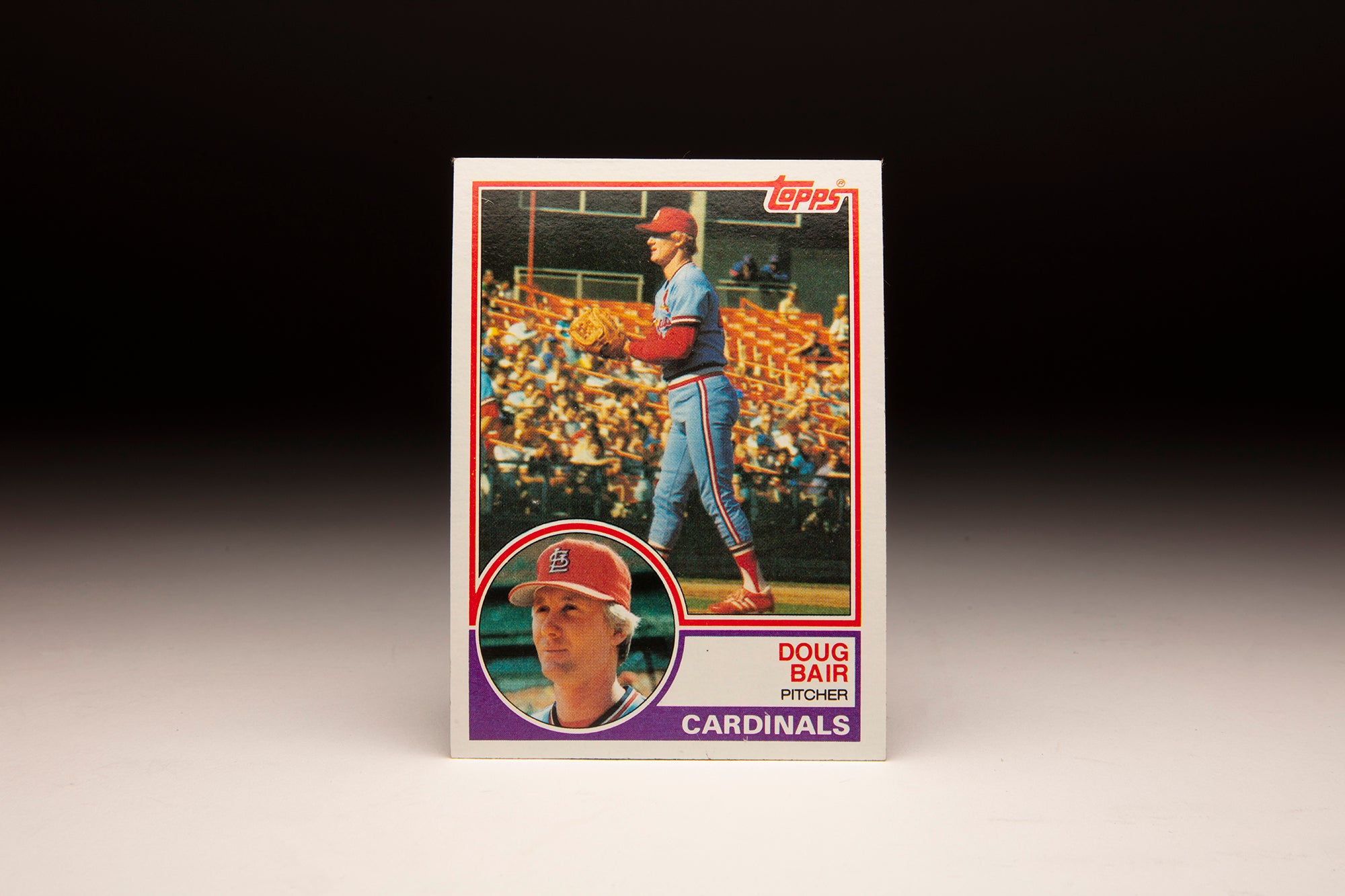
#CardCorner: 1983 Topps Doug Bair
#CardCorner: 1975 Topps Larry Biittner
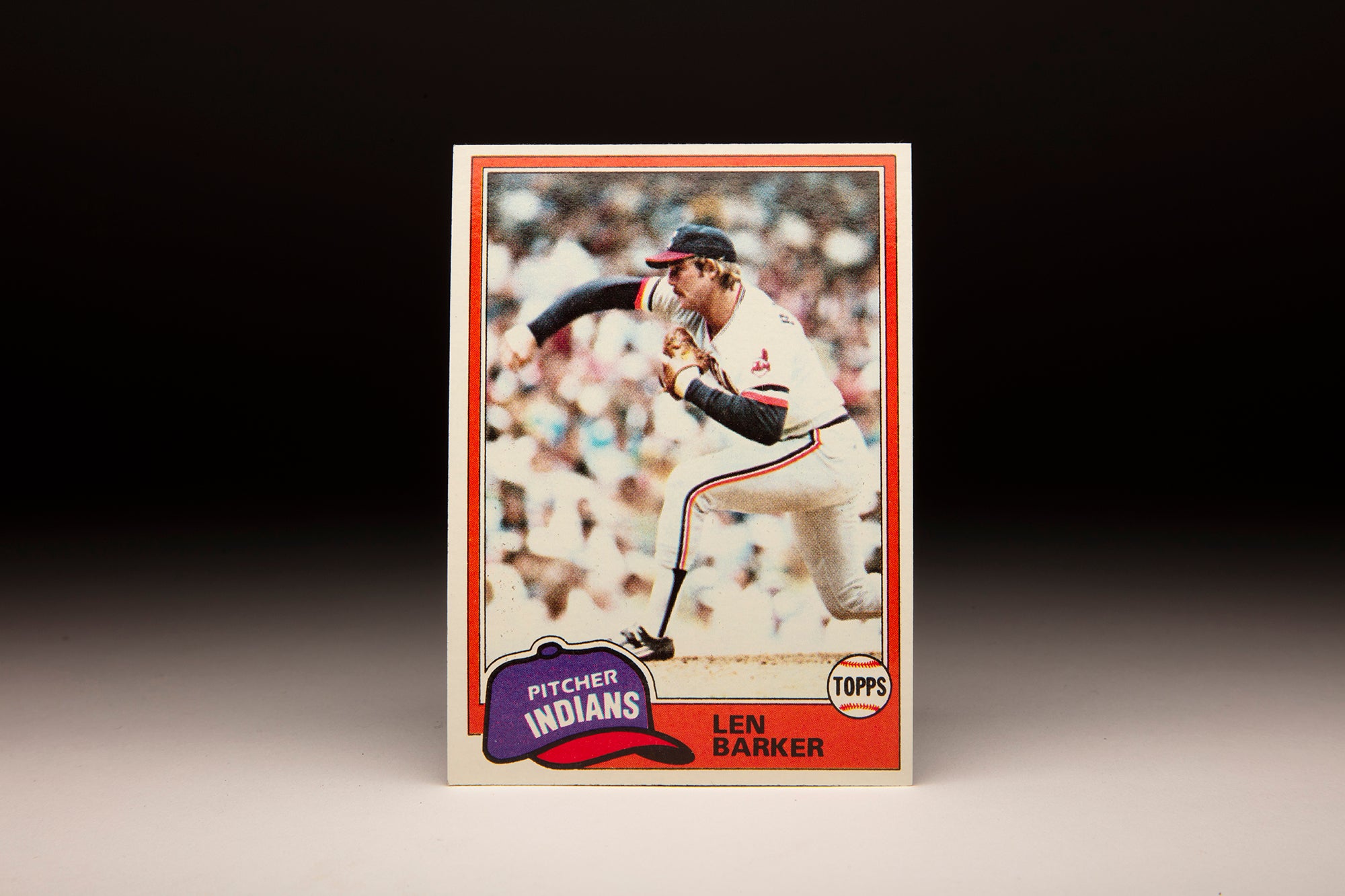
#CardCorner: 1981 Topps Len Barker
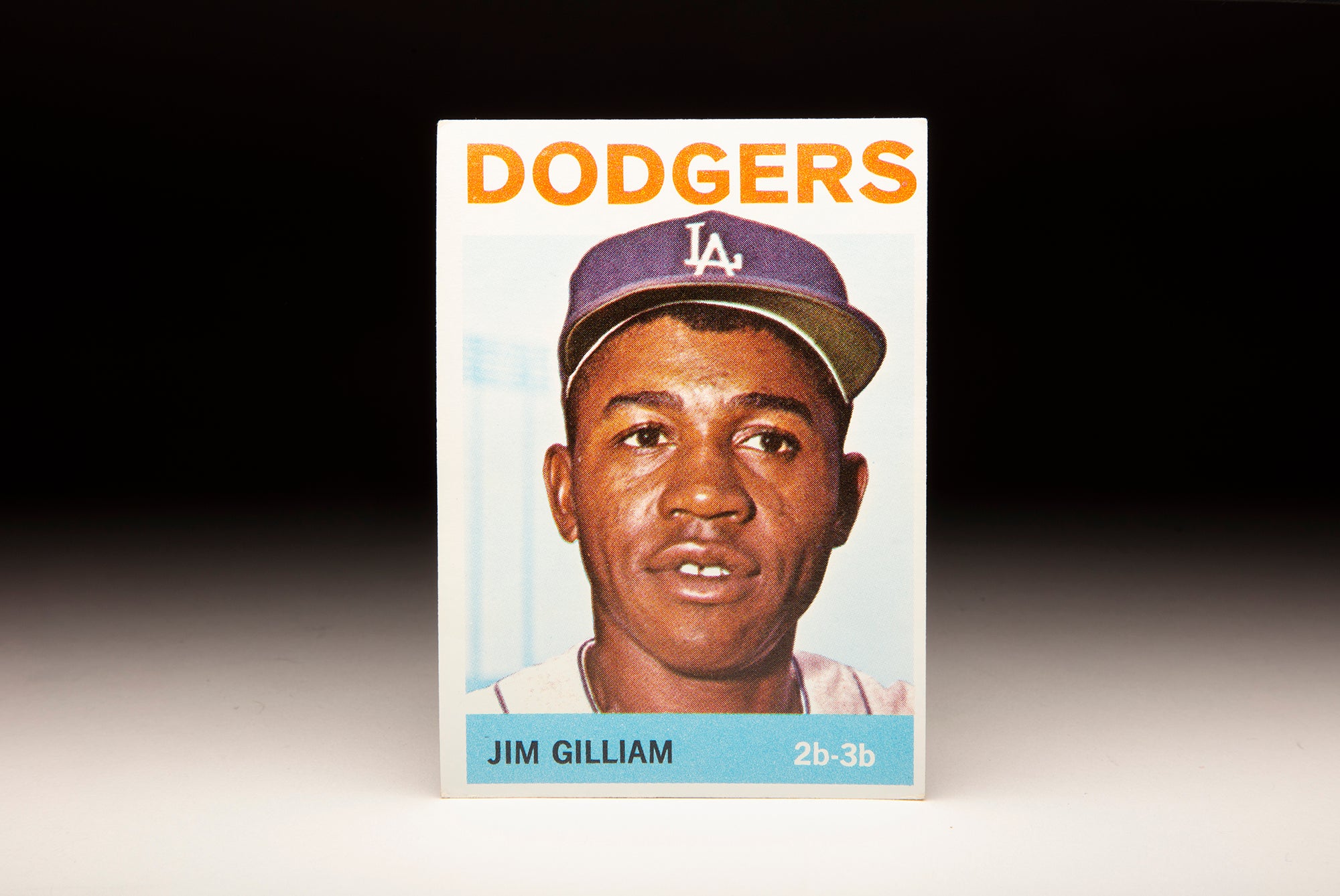
#CardCorner: 1964 Topps Jim Gilliam

#CardCorner: 1983 Topps Doug Bair
#CardCorner: 1975 Topps Larry Biittner

#CardCorner: 1981 Topps Len Barker


